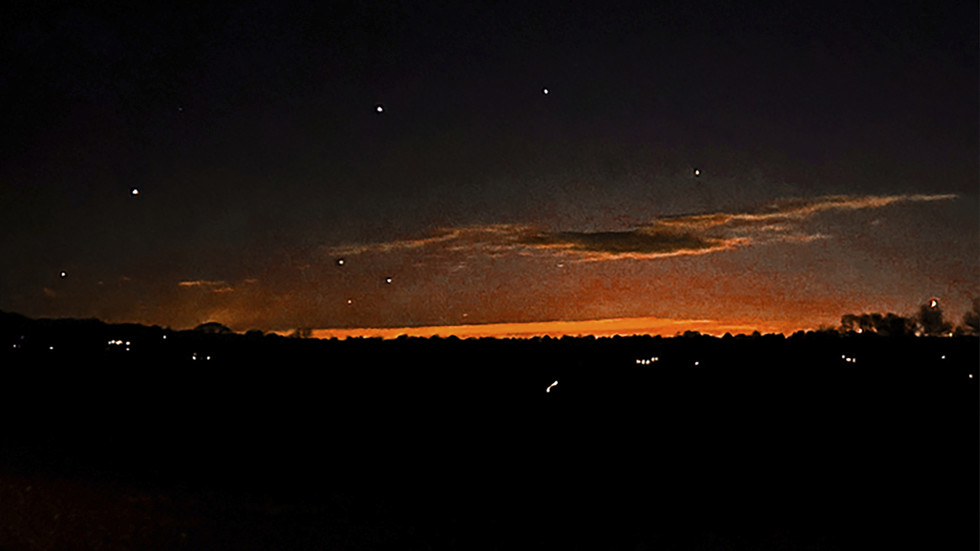In recent weeks, a wave of mysterious drone sightings across the United States has sparked significant public interest and concern, leading to a large number of Americans suspecting that the government is withholding information. According to a CBS News/YouGov survey conducted between December 18-20, nearly 80% of respondents believe that the US government is not being forthcoming about these sightings, with around half of the population viewing these drones as a potential threat. The survey, which gathered responses from 2,244 adults and had a margin of error of 2.4 points, indicates that more than half of the US population is following the story closely. As awareness increases, so does suspicion regarding the government’s involvement or hidden agenda behind these occurrences. The public’s growing anxiety highlights a significant divide between citizens’ perceptions of safety and the official explanations regarding the lack of threat presented by the drones.
This recent surge in drone sightings first came to public attention in mid-November with numerous accounts of large, unidentified drones flying over regions in New Jersey at night. The sightings quickly spread to neighboring states, including New York and Pennsylvania, with reports emerging from various locations nationwide, encompassing southern and midwestern states as well as the Pacific coast. These widespread sightings have triggered a multifaceted response from local, state, and federal authorities aimed at alleviating public fears and clarifying the situation. The federal government, including agencies like the FBI, Department of Homeland Security, and the Department of Defense, has been involved in investigating these reports, highlighting the seriousness with which they are treating the issue.
Despite the extensive investigations by the FBI, DHS, FAA, and DoD, officials have concluded that many drone sightings represent no clear threat to national security or public safety. A joint statement from these agencies indicated that they have received over 5,000 tips on reported sightings, leading to around 100 actionable leads. Upon examining the technical data and tips, they suggested that the sightings were likely attributable to a mix of lawful commercial and hobbyist drones, law enforcement surveillance aircraft, and even misidentified stars. This assessment indicates that, while numerous reports have been generated, the nature of the sightings often involves benign activities rather than any malicious intent or unidentified aerial phenomena.
While the US military has acknowledged that there have been drone incursions over military facilities in the past year, they have characterized such occurrences as not unusual and typically lacking hostile intent. Nevertheless, public skepticism persists. Many citizens remain unconvinced about the thoroughness of the government’s inquiries, pushing for greater transparency and more definitive answers. Interestingly, public figures such as President-elect Donald Trump have added to the discourse, with Trump asserting that any unidentified objects must either be disclosed to the public or shot down, underscoring a sense of urgency amidst the rising confusion. His remarks, made on social media, reflect a growing frustration among the public concerning the government’s handling of unexplained phenomena.
As investigations continue, the inconsistency between official statements and public perception remains a central theme. Law enforcement officials and independent analysts have echoed the findings of federal agencies, noting that many of the reported incidents remain unresolved. The atmosphere surrounding the drone sightings is one of heightened suspicion, as citizens grapple with conflicting narratives about national security and the nature of aerial surveillance. The ongoing search for clarity extends to both politicians and citizens, with many feeling that the government’s responses are insufficient for addressing widespread anxiety about unexplained events owing to their proximity to civilian living spaces.
In summary, the wave of recent drone sightings has led to a significant public outcry, with the overwhelming sentiment being that the US government is not fully transparent about the phenomenon. Despite formal reassurances from federal agencies asserting that the sightings do not pose a national security threat, public skepticism remains high, driven by a desire for clearer information and accountability. The issue highlights a broader commentary on government-citizen relationships, particularly regarding transparency and communication in the face of emerging technological phenomena. As the investigations develop, it remains uncertain whether public confidence can be restored, or if the shadows of doubt will continue to loom over the government’s involvement in and knowledge of these mysterious drone sightings.

